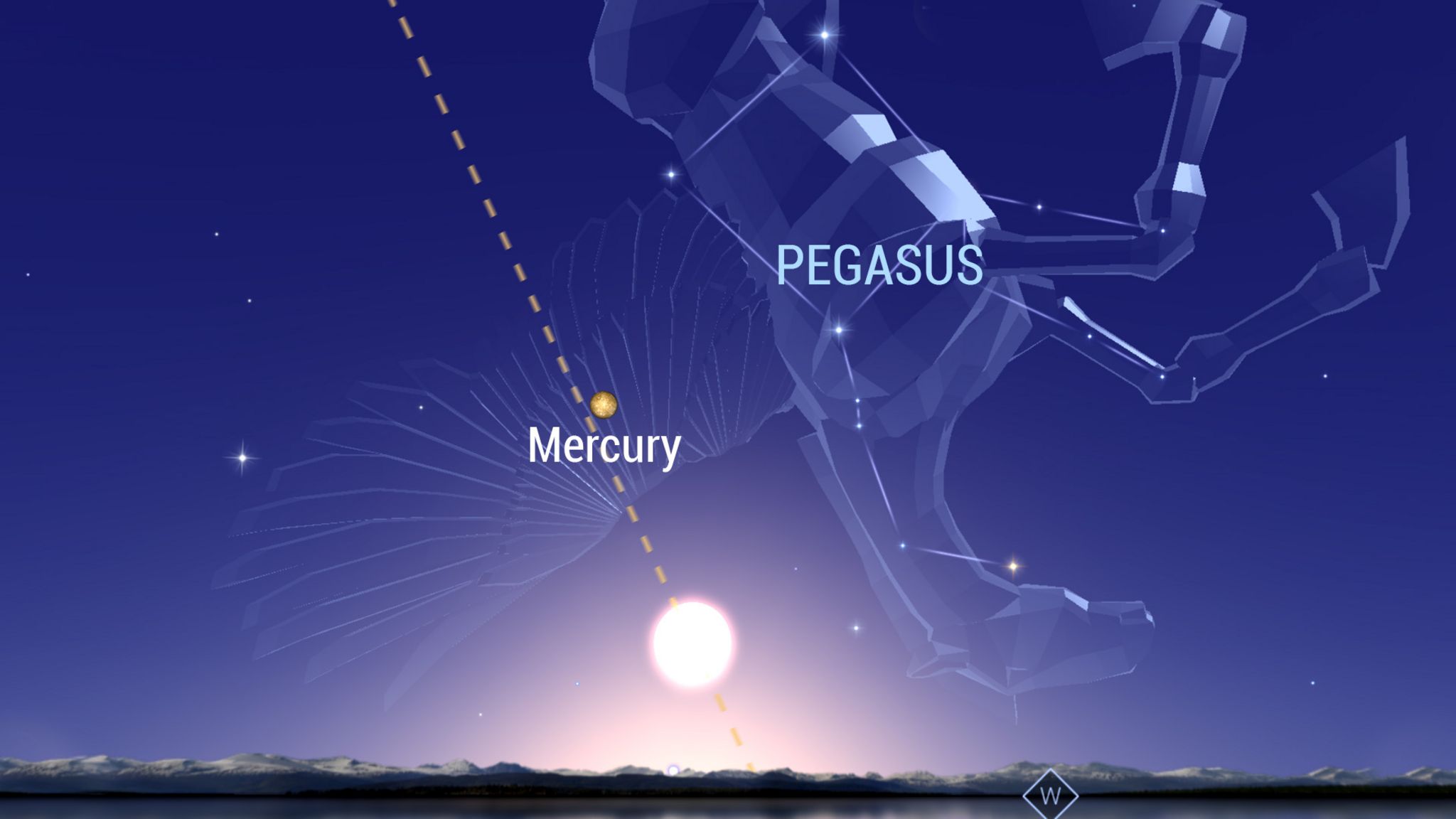Planets this Week
This week’s evenings are your absolute best chances to see elusive Mercury during 2019, if you live in the Northern Hemisphere! On Tuesday evening, Mercury will reach its widest separation from the Sun. Because Mercury will be sitting above a nearly vertical evening ecliptic, the sky will begin to darken while Mercury is still well above the western horizon – revealing the planet clearly.
The optimal viewing times fall between 6:15 and 7:15 pm local time. If you view Mercury in your small telescope, the planet will exhibit a waning half-illuminated disk. Find a viewing spot where the western horizon is low and free of foreground obstructions. Once the sun has fully set, sweep the sky with binoculars - or your own sharp eyeballs – looking for a medium bright, unmoving point of light.
The other easy evening planet to see this week will be Mars. When the sky begins to darken, Mars will appear as a medium-bright, reddish pinpoint of light about halfway up the western sky. The Red Planet will set at about 11:15 pm local time. Mars has been slowly shrinking in size and brightness as we increase our distance from it little-by-little.
Mars is still positioned less than a fist’s diameter above the much dimmer, blue-green planet Uranus. During this week, Mars will continue to climb away from Uranus. In the meantime, the distant ice giant planet can be identified by aiming binoculars about 1.6 finger widths above the modestly bright star named Torcular (or Omega Piscium). Look for Uranus right after dark - this week the planet will set at around 10:30 pm local time.
If you are willing to venture outside on a clear morning this week, you can enjoy the spectacle of the moon plus three bright planets – Jupiter, Saturn, and Venus, appearing low in the eastern morning sky.
Bright Jupiter will rise first, at about 3 am local time. By dawn, it will be a beacon in the southern sky. Yellowish Saturn, which is twice as far away as Jupiter, is correspondingly dimmer. The ringed planet will rise at about 4:30 am local time and will be lost in the twilight by 7 am. Our sister planet Venus is only one-fifth as far from Earth as Jupiter. Venus’ blazing brilliance will grace the southeastern dawn sky after 5 am local time, and remain in view until sunrise. In a telescope, Venus will exhibit a gibbous (more than half-illuminated) phase.



